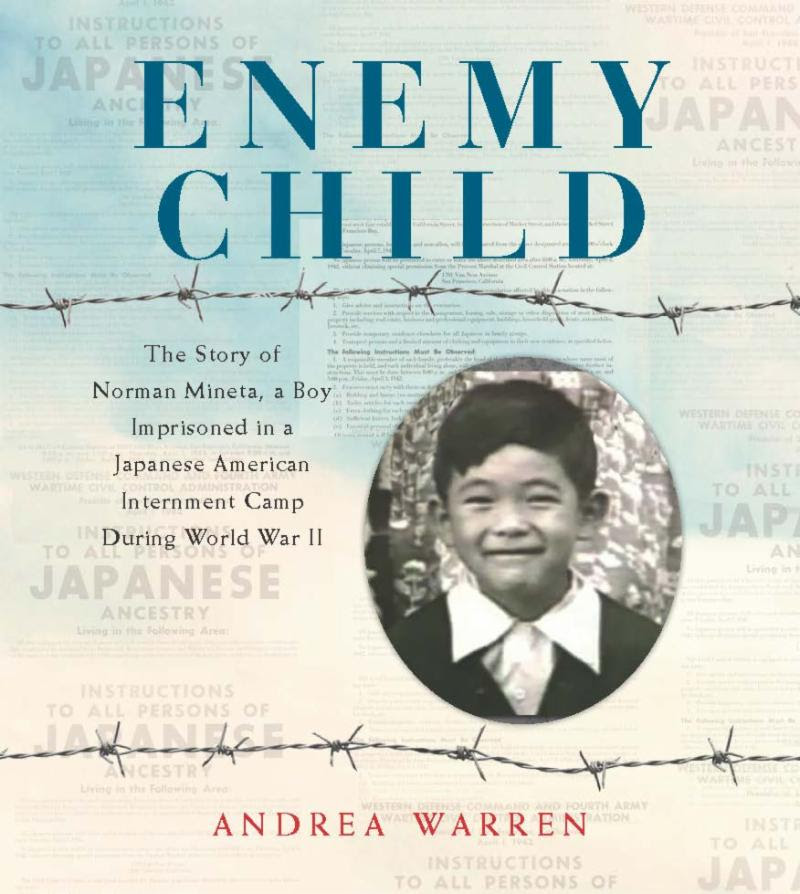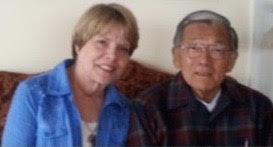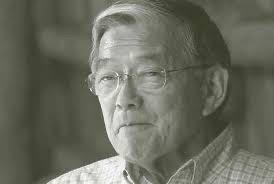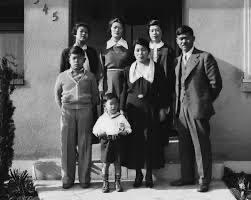Holiday House, 2019
 Twice in my book writing career a topic has found me. With the others, I have known what I wanted to write about, and then I began the search for just the right person whose personal story would help me explore a specific history: prairie pioneers, Nazi death camps, orphan trains, etc. While living in London for several months, I learned how Charles Dickens had crafted many of his novels to help change societal attitudes about the poor. When I learned what a difference this had made for street children, I knew I wanted to write about this by exploring Dickens’ own childhood.
Twice in my book writing career a topic has found me. With the others, I have known what I wanted to write about, and then I began the search for just the right person whose personal story would help me explore a specific history: prairie pioneers, Nazi death camps, orphan trains, etc. While living in London for several months, I learned how Charles Dickens had crafted many of his novels to help change societal attitudes about the poor. When I learned what a difference this had made for street children, I knew I wanted to write about this by exploring Dickens’ own childhood.

The author and Norman Mineta
While re-searching my book about Buffalo Bill, I was working in the archives of the Buffalo Bill Museum of the West in Cody, Wyoming, when I learned that a new interpretive center had just opened at the nearby Heart Mountain War Relocation Center—one of the internment camps where Japanese Americans were imprisoned during World War II.
 Curious, I went to visit and felt immediately that I wanted to write about this subject. While I was touring the interpretive center, I learned that Norman Mineta and his family had been there, and I knew at once that it was his story I wanted to tell. It took some effort to contact Norm and convince him to let me write about him and his experience. “Enemy Child” is the result.
Curious, I went to visit and felt immediately that I wanted to write about this subject. While I was touring the interpretive center, I learned that Norman Mineta and his family had been there, and I knew at once that it was his story I wanted to tell. It took some effort to contact Norm and convince him to let me write about him and his experience. “Enemy Child” is the result.
 In it, I tell the dramatic story of how Norm, then ten years old, was sent with his family to Heart Mountain War Relocation Center in Wyoming, where they lived in one room in a tar paper-covered barracks, without running water or privacy. They endured extreme weather conditions, dust storms, and poor food. Worst of all, they were prisoners behind barbed wire.
In it, I tell the dramatic story of how Norm, then ten years old, was sent with his family to Heart Mountain War Relocation Center in Wyoming, where they lived in one room in a tar paper-covered barracks, without running water or privacy. They endured extreme weather conditions, dust storms, and poor food. Worst of all, they were prisoners behind barbed wire.

Norm, in the front, with his family
Norm never forgot this experience. He later entered politics and served ten terms in the House of Representatives, and then served in two presidential cabinets. Among his many achievements in Congress was helping to get legislation passed requiring the government to formally apologize to the Japanese American community for one of this country’s most egregious civil rights violations.

The internment camp and Heart Mountain
Enemy Child has a hundred photos, maps, and illustrations to help tell Norm’s story and that of all Japanese Americans. When you step into Norm’s shoes and take this journey with him, I hope you will learn what it is like to have your own government declare you an enemy, take away your rights, force you from your home, and imprison you—an experience far too many people in countries around the world are enduring at this very moment.
Four Q&A’s with Andrea Warren about “Enemy Child”:
Why is this story important?
The facts of the American government forcing 120,000 West Coast Japanese Americans into prison camps during World War II because of the concern that they might aid enemy Japan is highly significant today. Who should be allowed into our country and whether certain minorities and/or religions from certain countries should be allowed into the US is a heated and divisive topic. We have much we can learn from what happened our Japanese Americans.
Were all Japanese Americans put into internment camps?
All were under scrutiny, but only the 120,000 (out of a total population of 150,000) who lived within 50 miles of the Pacific Ocean were imprisoned for fear that they might secretly assist Japan in an invasion of the West Coast.
Who is this book written for?
Readers of all ages, though I have as usual specifically targeted young readers and young adult readers. As I have with all my books, I tell the story from the perspective of a young protagonist. In this book it is Norman Mineta, a resident of San Jose, California, who was ten years old when the Japanese bombed Pearl Harbor.
Against this historical backdrop, what are some of the highlights of Norm’s experiences?
Some particular images that stand out include:
- Being forced from home. Norm, his parents and older siblings had to wait for several hours for the train that would take them from their comfortable home to confinement in a place not yet identified. Norm was wearing his Cub Scout uniform that day and carrying his beloved baseball bat and glove. Then a military police officer approached and ordered him to surrender the bat, stating that it could be used as a weapon. As they boarded the train and reality set in, for the first time in Norm’s life he saw his father cry.
- The story of Norm’s father and mother coming to America. His father was just 14 and had come to visit an uncle long enough to learn about American farming methods, but decided to stay. A decade later Norm’s mother arrived from Japan as a Picture Bride to marry a stranger: Norm’s father. Their union thrived and they raised five children. Norm was the youngest. All were university educated and Norm’s father was a successful businessman in San Jose.
- Norm’s adventures at Heart Mountain. Norm learned to ice skate, sledded in the snow, played baseball every day this was possible, was an avid scout, climbed Heart Mountain, killed a rattlesnake, made good friends, and had a devoted teacher—a Quaker volunteer—who helped him devise learning strategies to help with his dyslexia. He also had the very difficult experience of fearing for his mother’s health when she suffered from a heart condition and was hospitalized.
- The Miracle of Heart Mountain. Camp inmates found the government surplus food they were forced to eat to be tasteless and boring. They were allowed to cultivate the fields surrounding the camp and found ways to grow the vegetables and even some fruits that they loved. Those who had been chefs were given permission to help with the preparation and seasoning–and meals improved immensely, to everyone’s joy.
- The story of the 442nd. In 1944, in need of manpower, the government once again began drafting eligible Japanese Americans into the military or officially allowing them to enlist (in truth, many had been serving since the beginning of the war). Most of the men became part of the 442nd battalion and were sent to Europe where they became the most decorated troops in American history.
- Norm’s brother meets their Japanese grandfather. Norm’s brother Albert became part of the army occupying Japan after the war. Although he visited his maternal grandparents, his paternal grandfather refused to see him. Albert went repeatedly to the house, always bringing gifts of scarce food rations. Finally one day he was ushered into the house but was forced to wait for a long time before his grandfather appeared. Albert knew the waiting was meant to humble him. Grandfather said he was happy to see his American grandson but not in the uniform of the enemy. However, the ice was broken and after that Albert was a welcome guest.
RECOGNITION:
Presented the 2019 Eskin Memorial Lecture at the Library of Congress, Thomas Jefferson Auditorium, Washington, DC.
Interviewed in a Q&A hosted by the executive director of the Smithsonian’s National Museum of American History, Washington, DC.
Guest presenter at the Tucson Festival of Books, Tucson, Arizona, and the Kansas City, Missouri, Public Library, Plaza Branch
Winner: 2020 Thorpe Menn Literary Excellence Award in Kansas City from the Kansas City chapter of the American Association of University Women
Winner: The American Society of Journalists & Authors 2020 Book Award for Outstanding Children’s Nonfiction
Winner: The Society of Midland Authors 2020 Children’s Reading Roundtable Nonfiction Award
Winner: Bank Street College Flora Stieglitz Straus Award for Best Nonfiction Book for 2019
School Library Journal Best Book 2019
Horn Book Best Book 2019
Honoree: The California Reading Association Eureka! Gold Award
NCIBA Golden Poppy Book Award 2019, Long List
Starred reviews in The Horn Book and in the School Library Journal
Nominee: 2021 Grand Canyon Reader Award
Featured on “Standard Issue” podcast, Cambridge, England, by host Hannah Dunleavy
★★★ A Junior Library Guild Selection ★★★
FROM THE REVIEWERS:
★ An inspiring story of character and endurance despite hardships. Important, well-told, and an excellent choice for social studies classes, literature circles, and libraries. Extensive back matter enriches understanding of this historical narrative. —School Library Journal, starred review
★ With so many individual stories, only one absolute emerges from this historical period: a large segment of our population, whether U.S. citizens for first-generation Japanese people deprived of citizenship, were denied their constitutional and civil rights. Warren leaves much to ponder about our nation’s past and present, about ‘this beautiful tapestry that is America.’ —The Horn Book, starred review
With great sensitivity, Warren traces the experiences of former congressman Norman Mineta, whose family was forcibly relocated in 1942 during the WWII-era internment of Japanese-Americans. Interweaving historical background, various accounts, and Mineta’s first-person recollections, Warren skillfully illuminates what it felt like to be targeted and imprisoned. There are still too few books for youth about U.S. Japanese-American internment, and this affecting volume offers an essential view. —Publishers Weekly
Warren’s biography adroitly covers Mineta’s subsequent education and distinguished career. Extremely well researched and boasting Mineta’s cooperation, the book is generously illustrated with period black-and-white photos. It’s a fascinating record of an eventful and significant life. —Booklist
Warren bases her narrative on interviews, as well as other primary and secondary resources, and although readers who have read other work on the internments camps will find much that is familiar, the Mineta family story offers particulars that do not emerge with such clarity in other accounts.—Bulletin of the Center for Children’s Books
Warren is brilliant in interweaving history with its impact on one boy. Enemy Child is an initiation into a dark period of American History. As a book for young adults, Warren assumes little or no prior knowledge of these events from the reader. Thus, as the story of Norman Mineta unfolds, so does its historical background. It is a powerful, poignant page-turning narrative of an American boy who was treated as a prisoner and reviled as an enemy because of his ancestry. But it is also a story of patriotism, honor, dignity and resilience from a family of immigrants who never, for one second, was disloyal to our country. VickiCobbsBlog.com
Hopeful, yet also a reminder that policies our government develops to “protect us” can also be shameful and grossly unfair. An important book and a great read, from a masterful historical storyteller. —Amazon Review by Pat McNees, author and journalist
Absolutely one of the most important stories for all Americans to know. A truly special book. —Steve Sheinkin, author of Bomb.
Articles and Interviews with Andrea Warren on the publication of “Enemy Child”:
Publishers Weekly link:
https://www.publishersweekly.com/pw/by-topic/childrens/childrens-book-news/article/79580-the-enemy-child-who-became-a-leader-a-u-s-congressman-s-story-of-incarceration.html
The Shawnee Mission Post link:
Join Cyrus Webb on Conversations Live to hear a short interview with Andrea Warren discussing “EnemyChild”:
Interview with Sandra Bornstein: https://sandrabornstein.com/q-a-with-andrea-warren/
Book review by Sandra Bornstein: https://sandrabornstein.com/enemy-child-a-must-read-story-for-middle-school-readers/
